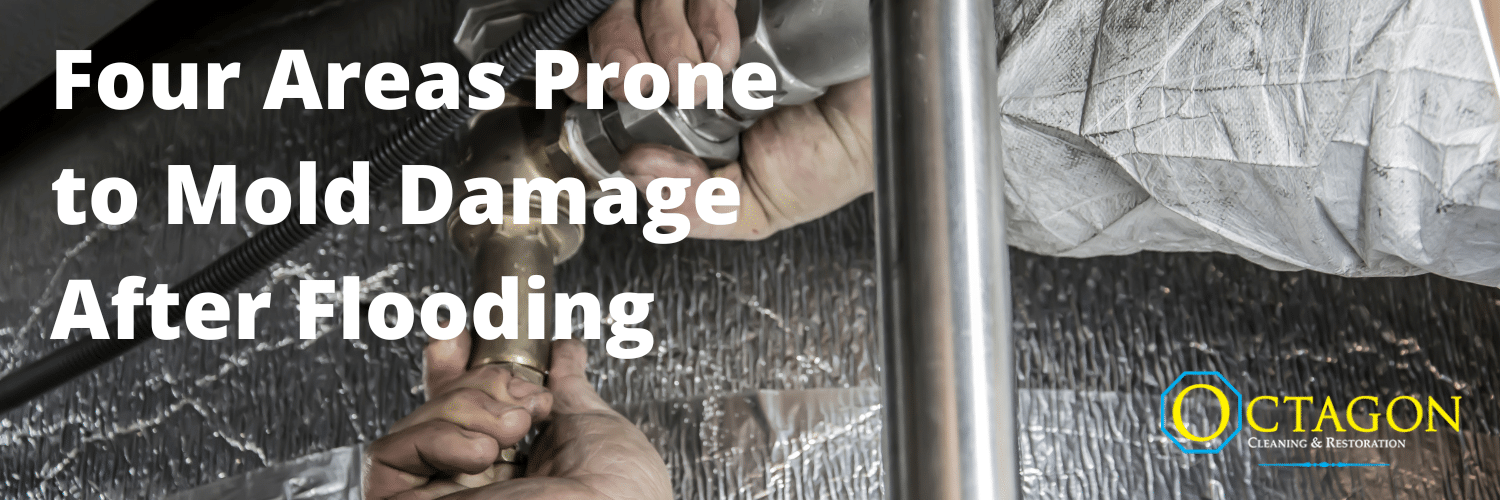
This blog will explain how water damage to a property can be a tricky situation. Water is difficult to contain, and it can get into the most unexpected places and may be difficult to spot. Some common areas for mold after a flood are inside walls, air vents, under flooring, and under cabinets.
Where might mold grow after water damage occurs?
Maybe a few months ago, you had a burst pipe, a long-running leak under the sink, or the dishwasher flooded the kitchen. You’d see obvious damage initially; wet floor, drywall, etc. What you might not have seen was water spreading between walls, into HVAC systems, or seeping under cabinets, for example. With proper water mitigation, this is avoidable and detectable.
However, if left untouched, over time, you might notice a musty odor or discoloration and find yourself asking if there is a possibility of mold after the flood damage. Water will always follow the path of least resistance; for example, in the case of a dishwasher, water can easily travel under the adjacent cabinets. If not removed and/or dried, mold will begin to grow quickly. The longer it sits, the worse the affected material will be affected by mold. Not only does it affect the integrity of materials, but it’s also a serious health hazard. This is why it’s always important to allow professional mitigation companies to handle water mitigation, to prevent further problems down the line.
Why shouldn’t I handle this on my own?
The question isn’t if you can mitigate on your own; the question is if you should.
Trained water damage mitigation companies will ensure faster and proper drying to get you back into your home or business as soon as possible. The focus is also on ensuring water does not spread further, causing secondary damage and preventing mold growth. Oftentimes, demolition will be needed not only to promote drying but also to ascertain whether or not the water has traveled further than initially thought.
To prevent mold growth after a flood, it is imperative to get in touch with your insurance company and an IICRC-certified water mitigation firm. Skilled technicians, special drying equipment, and the cleaning or removal of affected material are what stand between you and the preservation of your indoor air quality. You may feel confident in handling water mitigation on your own; however, professionals can assess if there is further damage beyond what we can visibly see without removing material. Past damages left unmitigated can result in a lack of insurance coverage and hefty costs to repair or replace.
Contact a Water Mitigation Specialist 24/7
The first thing to do after a flood in your space is to call a water mitigation specialist – if it’s too late for that, and you think you may have mold growth from a previous issue, you should call an IICRC-certified mold remediation firm. A mold specialist will be able to provide recommendations to make sure mold is removed safely and properly. Octagon Cleaning is happy to provide free inspections for mold and water damage in Maine and New Hampshire.

